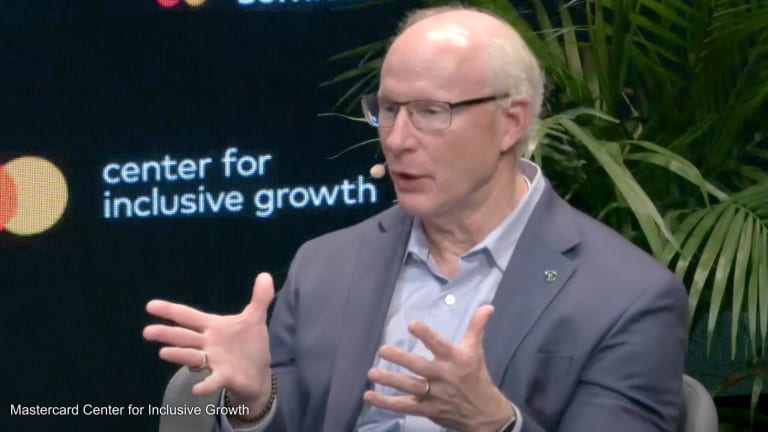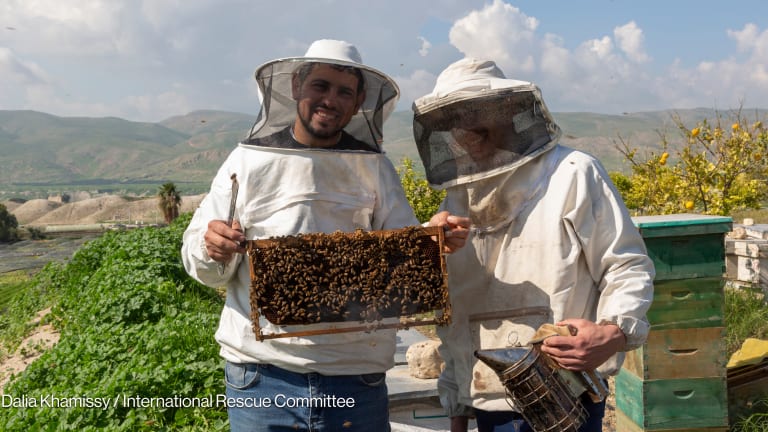Tips on how small countries can become development donors
Entering the development space as a donor can be a daunting task for a small country, with domestic and external challenges. Israel's development finance strategist shares three tips on how to overcome the difficulties.
ABIDJAN, Côte d’Ivoire — New donors entering the development finance landscape are facing a host of challenges. Usually with smaller budgets, emerging donors can struggle to integrate into coordination and financing mechanisms. A growing number of countries in Central and Eastern Europe, including Croatia, Serbia, Poland and Romania, as well as central Asian countries such as Kazakhstan and Uzbekistan have recently opened formal development aid agencies. These countries are in addition to middle-income economies such as China, India, Brazil and Mexico, which also provide development aid abroad. Compared to lending from the 30 Development Assistance Committee country members at the Organisation for Economic Co-operation and Development, the scale of foreign assistance from other countries is relatively small. But it is growing. One concern for small donors and their recipients is the fragmentation of aid, where aid is delivered in small increments, at times through complex transactions that are costly for recipient countries to absorb. Some advocates have called for innovative mechanisms that can support pooling of resources amongst donors, or leverage the funds of multilateral entities, such as the United Nations and the World Bank. “In an increasingly crowded international development space, the continued entrance of new actors — public and private — raises many very valid questions as to coordination, efficiency, effectiveness, transparency, and accountability,” U.N. Development Program Policy Specialist on Development Finance Gail Hurley wrote in a recent blog on how new donors are reshaping development aid. Israel soon hopes to join the list of emerging donors, with Africa as a high-priority region. During a recent visit to West Africa, Devex spoke with Israel’s development finance strategist, Zafrir Asaf, the government official responsible for outlining the country’s development program. A major challenge to being a small donor is the lack of systemic support for small donors, he said. Asaf also spoke about the need for innovative approaches that take into account the non-financial contributions of small donors, whether technological advances, adaptable business models or a culture that encourages partnerships. Other countries including Korea, Singapore and the Baltic States could be among new, emerging donors in the near future. “And maybe in the further future, countries like Vietnam, the Philippines, Kenya — so we need to find a way to integrate those partners into the system even though they will be coming with smaller amounts than the traditional donors,” Asaf explained. Though the challenges remain many, Asaf offered three tips for small countries interested in becoming donors. 1. Use national strengths to focalize areas of investment. Smaller aid budgets shouldn’t deter a country from entering the donor space. In fact, limited resources can help narrow the focus toward a country’s strengths. In the case of Israel, Asaf told Devex that the country plans to invest in strengthening African cybersecurity, IT and food security. Israel’s own high-tech sector benefited from World Bank loans several decades ago; now, the country plans to leverage this expertise to promote development elsewhere. “Cybersecurity wasn’t a development issue a year or two ago, and now it’s becoming critical for the resilience of developing countries,” Asaf said. “And because the way to mitigate cyber risks and prepare for cyber attacks is relatively modest, it’s an amazing opportunity for small donors to make a big impact.” Asaf urged the development sector to open up to the possibility that small donors could meet these specific challenges in a targeted way. 2. Take time to address internal biases and attitudes toward development. Becoming a global donor requires a national shift in mentality, from looking inward to examining the needs of outside countries. For countries transitioning from being developing states themselves, governments, private companies and individuals need time to adapt. “It takes time for the people to actually be able to look outward and sympathize and feel responsible for the challenges other people are facing, so this is something that decision-making civil servants need to be aware of,” Asaf told Devex. Technology and greater access to information has helped this process, since many development challenges are well-known. But awareness doesn’t always filter down to understanding, he said. Trade can provide one entrypoint. Smaller countries tend to be export-oriented and more focused on mature markets. But the opportunities (and challenges) of emerging markets should also be considered to help diversify a country’s portfolio. In Israel, a customization program encourages companies to enter emerging markets by providing funding to Israeli firms that export to developed countries in order to customize their projects, services, solutions to emerging markets. The program also includes an awareness program for companies, helping them understand the risks of developing markets. 3. Work from the ground up to assess needs of recipient countries. Donors may have ideas about how to best impact a recipient country, but aid shouldn’t be entirely based on the strength of the donor. Programs need to understand where the gaps are on the ground and how the donor can bridge them. Field visits to prospective recipient countries are vital — a time to share expertise with leading decision makers and to explore and understand the local setting. These local visits are the most direct opportunity to gauge the potential impact of a proposed service or fund, a recent report by philanthropic consulting firm Geneva Global found. The report encourages donors to clearly define the purpose of their visit, while keeping an open mind to unpredictable changes or insights that may arise. Schedule meetings with rural populations, NGOs already working in the sector where you are proposing aid, along with government officials. Leave room for your development strategy to broaden or change course based on the takeaways from the in-country visit. Check out more practical business and development advice online, and subscribe to Money Matters to receive the latest contract award and shortlist announcements, and procurement and fundraising news.
ABIDJAN, Côte d’Ivoire — New donors entering the development finance landscape are facing a host of challenges. Usually with smaller budgets, emerging donors can struggle to integrate into coordination and financing mechanisms.
A growing number of countries in Central and Eastern Europe, including Croatia, Serbia, Poland and Romania, as well as central Asian countries such as Kazakhstan and Uzbekistan have recently opened formal development aid agencies. These countries are in addition to middle-income economies such as China, India, Brazil and Mexico, which also provide development aid abroad.
Compared to lending from the 30 Development Assistance Committee country members at the Organisation for Economic Co-operation and Development, the scale of foreign assistance from other countries is relatively small. But it is growing.
This story is forDevex Promembers
Unlock this story now with a 15-day free trial of Devex Pro.
With a Devex Pro subscription you'll get access to deeper analysis and exclusive insights from our reporters and analysts.
Start my free trialRequest a group subscription Printing articles to share with others is a breach of our terms and conditions and copyright policy. Please use the sharing options on the left side of the article. Devex Pro members may share up to 10 articles per month using the Pro share tool ( ).
Christin Roby worked as the West Africa Correspondent for Devex, covering global development trends, health, technology, and policy. Before relocating to West Africa, Christin spent several years working in local newsrooms and earned her master of science in videography and global affairs reporting from the Medill School of Journalism at Northwestern University. Her informed insight into the region stems from her diverse coverage of more than a dozen African nations.








